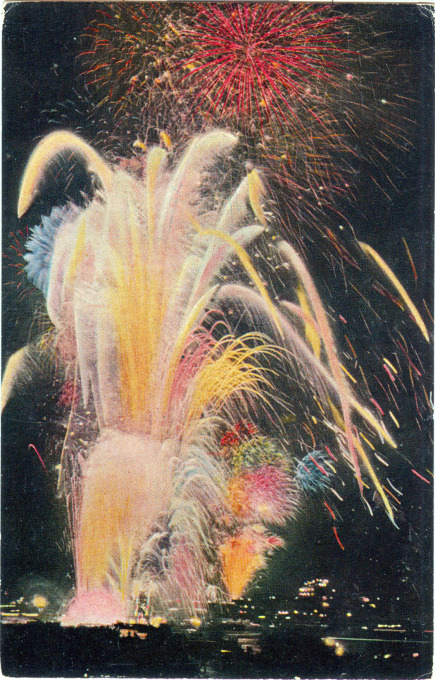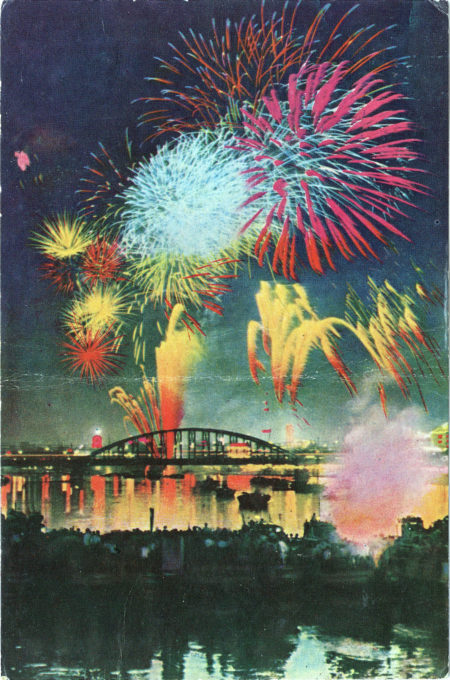“Near a famous bridge thousands of boats laden with tens of thousands of men, women and children and gaily illuminated with brilliant particolored paper lanterns assemble in one dense mass. A grand display of fireworks blazes forth from the bridge and the people in the boats respond with rockets and fire-balls, music and cheers. The houses along the banks of the river are also illuminated and crowded with spectators. Altogether the scene this year was beautiful beyond all the power of language to describe.”
– A Yankee in Hokkaido: The Life of William Smith Clark, John McGilvrey Maki, 1996
From the wiki: “Unlike fireworks displays in other parts of the world, the Sumidagawa Hanabi Taikai follows the Japanese tradition of being an intense competition between rival pyrotechnic groups. Each group tries to out-do the last, and the result is an incredible variety of fireworks, not just in different colors and patterns, but forming shapes as complicated as Doraemon, Pikachu, or kanji.
“Originally called Ryōgoku Kawabiraki [opening of the river], the display had become an established tradition by 1810, and rivalries began to emerge over control of each year’s festival. The Tamaya and Kagiya guilds of pyrotechnicians quickly became the two major rivals, initiating the tradition of the competition.
“Though the Tamaya came to enjoy steady popularity over the Kagiya, a major fire broke out in 1843, and the official support for the guild evaporated. The fireworks festivals, if they were to continue, would be moved further from the city, to a more remote and thus safer location.
“The tradition survived the upheaval of the Meiji Restoration in 1868, and continued nearly every year until it dropped off in the 1920s, and ceased entirely during World War II and for several decades afterwards. Finally, in 1978, the tradition was reinstated, and continues to this day.”




Pingback: Ryogoku Bridge, Sumida River, c. 1910. | Old Tokyo